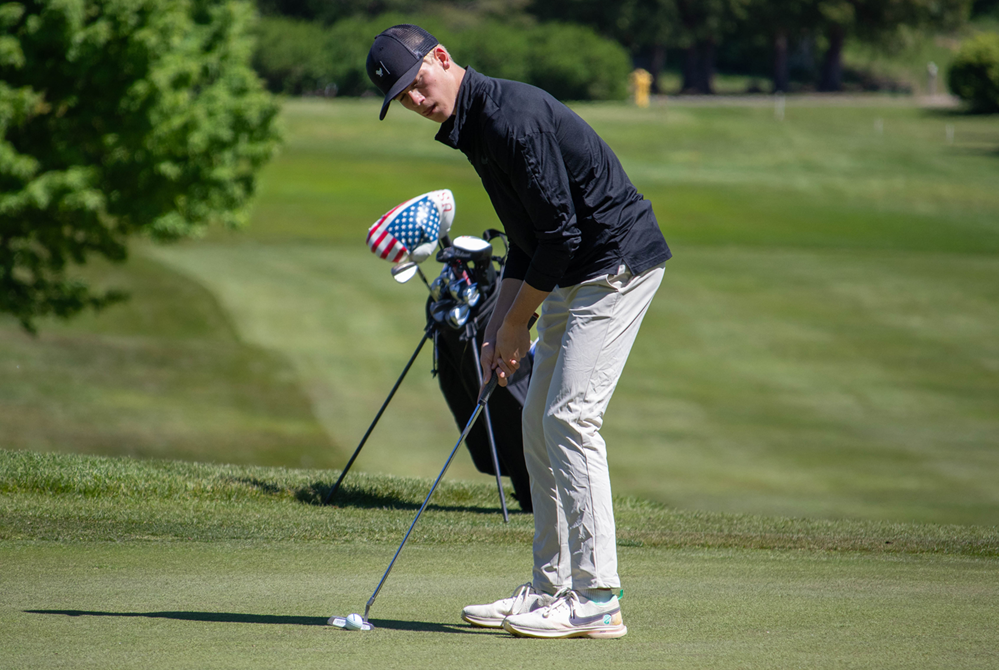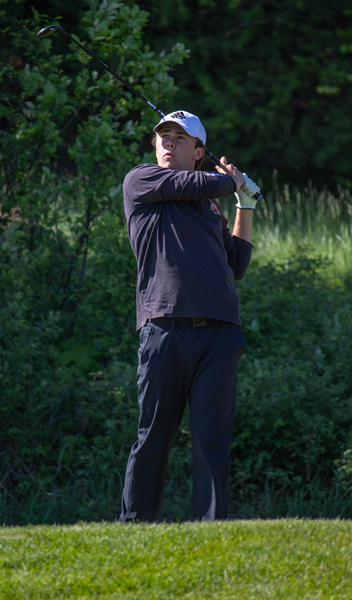
Keep on Coaching
February 1, 2013
By Geoff Kimmerly
Second Half editor
A few weeks ago, I finally got my first chance this season to watch a friend coach his basketball team. After guiding some others at the lower levels, this is his first time running the varsity – something he wasn't sure he wanted to do with a 1-year-old just learning to walk, but a challenge he ended up taking on to the benefit of all those involved.
Simply put, he’s good. I've seen a lot of teams and a lot of coaches over the past 15 years, and although I wouldn't know much of what to do if I were walking the sideline, I felt pretty qualified in telling him I was impressed – even if he didn't buy that I was offering an unbiased opinion. The best news is he’s gone from not sure about this a few months ago to talking about next season.
We know, at least anecdotally, that coaching continues to get more challenging. The time commitment has grown substantially to make running a program a year-round endeavor in a lot of sports at a lot of schools.
That commitment – especially for coaches with children of their own – was a main reason referred to in a New Haven Post-Chronicle story Saturday that noted 23 football coaching openings in Connecticut at one point this offseason. That state has 146 football teams – meaning roughly 15 percent will have new leaders this fall.
And that got me thinking about my friend, about how glad I am he’s given this a shot, and how I've seen so many others either not do so, or not stick around long despite having some pretty nice success.
A study published last winter in Interscholastic Athletic Administration magazine – a product of the National Interscholastic Athletic Administrators Association – noted some predictable results of a study that sought to determine the biggest challenges faced by first-year high school coaches.
The toughest according to the study was balancing the demands of coaching and teaching, experienced by nearly half the respondents – 98 percent of which coached high school teams and 81 percent of which are teachers.
The next six reasons all were noted by at least 30 percent of those in the study – personal fatigue, securing community support, securing and caring for facilities and equipment, parental contact, keeping non-starting players motivated, dealing with schedule interruptions and motivating athletes to achieve consistent, peak performance.
Nothing there is earth-shaking, and most if not all of these challenges are faced by high school coaches regardless of how long they've been in the field. But I got a little more perspective from some of the 32 items that ranked as least challenging to the first-year leaders – keeping in compliance with state and league regulations, dealing with substance abuse issues, teaching sport skills and creating a positive team atmosphere – things that seem most important, and yet appear to be easiest to do. I’m not sure what that tells us – but I think it tells us something.
Click to check out the entire three-page breakdown of the study, plus the researchers’ recommendations to remedy some of what first-year coaches face.
Giving back to Saginaw
I love reading about high-level athletes – like a star-studded group of alums from Saginaw – giving back to where they got their starts.
Pittsburgh Steelers star LaMarr Woodley made a big impact before the start of this school year by donating $60,000 to cover all participation fees for athletes in his former school district. The Saginaw News’ Hugh Bernreuter writes today about how Woodley (Saginaw High), the Philadelphia 76ers’ Jason Richardson (Saginaw Arthur Hill) and former Oakland Raiders standout Stu Schweigert (Saginaw Heritage) have combined to give more than $865,000 back to their home communities.
Bernreuter also mentions the non-monetary contributions of the Golden State Warriors’ Draymond Green (Saginaw High) and former Indianapolis Colts receiver Blair White (Saginaw Nouvel).
Click to read more about it.
Quote(s) of the Week
While rifling through more papers on my desk, I found an article from the Washington Post from Sept. 2011 titled “How high school sports save our schools.” I was drawn to it in part because I spent more than a decade in a newsroom, and it was a piece by a reporter covering education who instead of reporting on school boards and the like, delved into the importance of interscholastic athletics to education as a whole.
He spoke of how participation continues to grow even as resources dwindle, and of data supporting that extracurriculars like sports are more effective than academic classes in teaching leadership, teamwork, time management and “other skills crucial for success in the workplace.” Later, he mentioned a study noting that those who participate in extracurriculars earned more a decade later.
Click here to read the entre piece. These passages struck me most.
“Coaches might be the only faculty members still allowed by our culture and educational practice to get tough with students not making the proper effort. They have the advantage of teaching what are essentially elective non-credit courses. They can insist on standards of behavior that classroom teachers often cannot enforce because the stakes of dismissing or letting students drop their courses are too high. …
“Students do better in activities they choose. If we provide more of them, led by committed adults … that can make a difference. We know the bad news about education. Dropout rates are high. Achievement scores are stagnant. But sports participation is going up, despite pressure to cut it back. Let’s cheer about that and look for a way to draw in more students.”

Chipelewski Leads Talented Marquette Lineup to Impressive Title-Clinching 300
By
Caden Sierra
Special for MHSAA.com
May 30, 2024
MARQUETTE — The Marquette boys golf team showcased its depth while taking advantage of its home Marquette Golf Club course Wednesday to capture the team title at the MHSAA Upper Peninsula Division 1 Final
The young Sentinels separated themselves from the competition by more than 20 strokes, taking the top spot with an impressive four-player score of 300 while placing three of the top five individuals. They beat out runner-up Houghton, which had 321, and third-place Escanaba with 325.
Manistique came in fourth with 332 strokes, followed by Calumet in fifth with 333.
“These kids put in a ton of time, and we had a lot of depth,” veteran MSHS head coach Ben Smith said right after the result was determined. “Not only playing here today, but a lot of kids who have been in matches and played really well throughout the spring.
“It’s never easy … 300 is a really good score, and I'm really proud of the kids and the effort that they put in.”
 The Sentinels’ Kaleb Chipelewski won the medalist honor by topping the leaderboard with 72 to edge teammate Boden Moore by a single stroke. The tight race for the top was followed by Baraga’s Cage Osterman just another stroke back at 74, with three more golfers tying for fourth with 75 — Marquette’s Jack Pond, Houghton’s Brenden Jukuri and Escanaba’s Shane Wallin.
The Sentinels’ Kaleb Chipelewski won the medalist honor by topping the leaderboard with 72 to edge teammate Boden Moore by a single stroke. The tight race for the top was followed by Baraga’s Cage Osterman just another stroke back at 74, with three more golfers tying for fourth with 75 — Marquette’s Jack Pond, Houghton’s Brenden Jukuri and Escanaba’s Shane Wallin.
“I played really good; my (place) was high,” Chipelewski said. “Just came in, birdies on (Nos.) 2 and 3. Then bogeyed (Nos.) 7, 11 and 12, scored a couple more. It was really nice.”
Moore was both happy and a bit frustrated after coming so close to the top.
“I hit the ball really well, played really well, just couldn't get a putt to go in pretty much,” the runner-up said. “I ate a bunch of pars, but the team had a great round, so it (is) a good win.”
Pond had his own take on the Final, making a reference to NBA legend Michael Jordan — perhaps an unusual reference for someone who wasn’t even born when the famed Chicago Bulls player won his half-dozen league titles.
“It was like my MJ-flu-type game,” he said, referring to the time Jordan was sick but still gutted out one of his best games in the finals. “Started off slow, shot a good score on the back nine for how tough it was out there. I started off hot with 1-under(-par) through (No.) 6 and then finished with a few bogeys, but ended up being a really good day overall."
The entire top 10 — actually a top 13 with a big logjam around 10th place — all shot in the 70s.
After the logjam for fourth, Westwood’s Tanner Annala was next in seventh with 76, while Escanaba's Graham Johnson was eighth with 77. Then came a five-way tie for ninth, each with 79 — Jonah Slawinski of Menominee, Ben Anderson of Calumet, Marino Pisani of Houghton, Carson Kronemeyer of Sault Ste. Marie and Landen Dougherty of Manistique.
Marquette's Pavel McCutcheon and Kingsford senior Lance Harry came right in at 80 to tie for 14th place.
“These kids have pretty good nerves and hang in there when there are some tough stretches,” Smith said. “They play some high-quality golf when they need to, and it was really nice to see them do that today.”
PHOTOS (Top) Marquette's Kaleb Chipelewski addresses his putt on the ninth hole during the MHSAA Upper Peninsula Division 1 Final on Wednesday at Marquette Golf Club. (Middle) Houghton’s Marino Pisani watches his tee shot on the first hole. (Photos by Caden Sierra.)

